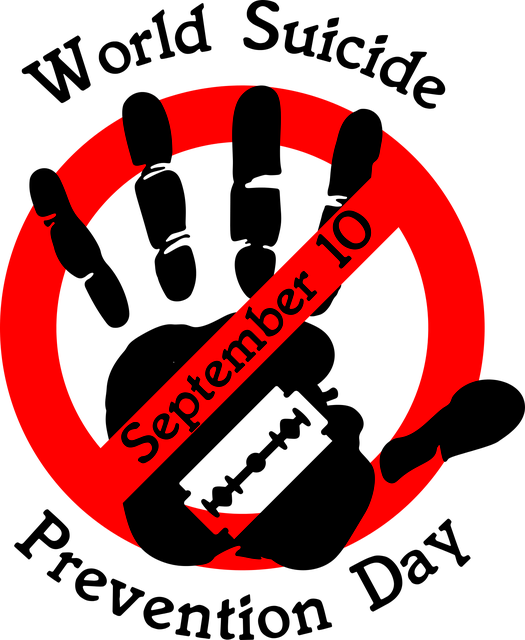Evaluating Colorado Springs Pain Management Therapy's mental wellness programs involves a blend of quantitative and qualitative methods. Surveys and interviews track measurable outcomes and subjective experiences, ensuring program effectiveness and tailoring support for diverse needs. Long-term success is measured through mood management, stress reduction, and ongoing coaching, enhancing care quality in Colorado Springs.
Mental wellness program evaluations are essential for measuring effectiveness and driving improvement. This article explores various methods used to assess the impact of initiatives, focusing on both quantitative data analysis and qualitative insights from participants’ perspectives. We delve into best practices for collecting meaningful feedback through surveys and interviews. Additionally, we highlight a case study of Colorado Springs Pain Management Therapy, showcasing how long-term tracking of mental wellness outcomes can demonstrate program success and inform future strategies.
- Assessing Program Impact: Quantitative and Qualitative Methods
- Participant Feedback: Using Surveys and Interviews Effectively
- Long-term Success Measurement: Tracking Mental Wellness Outcomes in Colorado Springs Pain Management Therapy
Assessing Program Impact: Quantitative and Qualitative Methods

Evaluating the impact of mental wellness programs is a multifaceted process that leverages both quantitative and qualitative methods to gain comprehensive insights. Quantitative techniques, such as surveys and statistical analyses, measure outcomes through numerical data. In Colorado Springs Pain Management Therapy, this might involve tracking reductions in symptom severity scores or improvements in patient satisfaction rates over time. These objective metrics provide clear, measurable evidence of program effectiveness, enabling practitioners to identify what works best for their clients.
Qualitative approaches, on the other hand, delve deeper into participants’ subjective experiences and perceptions. Methods like interviews, focus groups, and participant observations capture rich narratives around emotional healing processes and burnout prevention strategies for healthcare providers. For instance, a community outreach program implementation could reveal valuable insights through these qualitative methods, highlighting unexpected benefits or challenges that quantitative data alone might miss. This holistic evaluation is essential for refining programs and ensuring they remain relevant and impactful in addressing diverse mental wellness needs.
Participant Feedback: Using Surveys and Interviews Effectively

Participant feedback is a vital component of evaluating any mental wellness program, and it’s especially crucial in Colorado Springs Pain Management Therapy settings. Traditional methods like surveys and interviews offer valuable insights into the effectiveness of treatments. Well-designed surveys can collect data on various aspects such as satisfaction levels, perceived benefits, and areas for improvement. This quantitative data provides a comprehensive overview, allowing professionals to identify trends and make data-driven adjustments to their programs.
Interviews, both individual and group, offer a deeper understanding through qualitative feedback. Participants can share personal experiences, reflect on their journey, and provide candid suggestions. Combining these methods enables a holistic evaluation—quantifying overall satisfaction while also uncovering nuanced insights into specific aspects like self-esteem improvement or mood management. This dual approach ensures that the Risk Assessment for Mental Health Professionals is comprehensive, tailored to individual needs, and ultimately enhances the overall program’s effectiveness.
Long-term Success Measurement: Tracking Mental Wellness Outcomes in Colorado Springs Pain Management Therapy

In evaluating the long-term success of Colorado Springs Pain Management Therapy programs, a comprehensive look at mental wellness outcomes is essential. These programs often go beyond treating physical symptoms to include strategies for mood management and stress management, which are critical components of overall mental health. By tracking improvements in participant’s emotional well-being, resilience, and coping mechanisms over extended periods, therapists can assess the effectiveness of the therapy. This includes measuring changes in anxiety levels, depression symptoms, and the ability to navigate stressful situations, demonstrating the program’s impact on day-to-day life.
Mental wellness coaching programs development within Colorado Springs Pain Management Therapy benefits from this long-term perspective. Regular follow-ups and assessments allow therapists to tailor interventions, ensuring that participants continue to receive support aligned with their evolving needs. This ongoing evaluation fosters continuous improvement in mental wellness coaching programs, ultimately enhancing the quality of care provided in Colorado Springs.
Evaluating mental wellness programs is multifaceted, incorporating both quantitative and qualitative methods. By assessing impact through data analysis and participant feedback, we gain insights into program effectiveness. As seen in Colorado Springs Pain Management Therapy’s long-term success measurement, tracking specific outcomes reveals the lasting benefits of such initiatives. This comprehensive approach ensures that mental wellness support remains tailored and impactful for all individuals.













